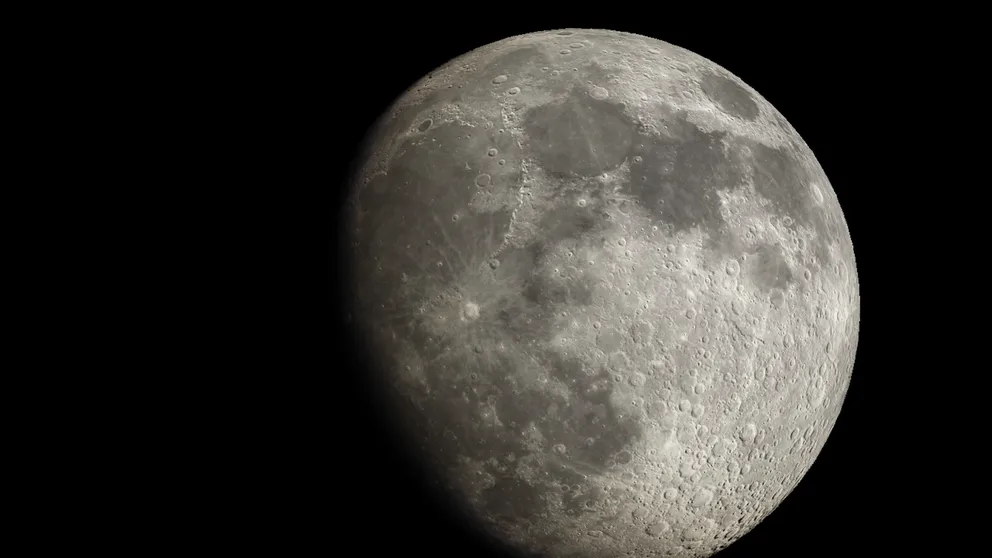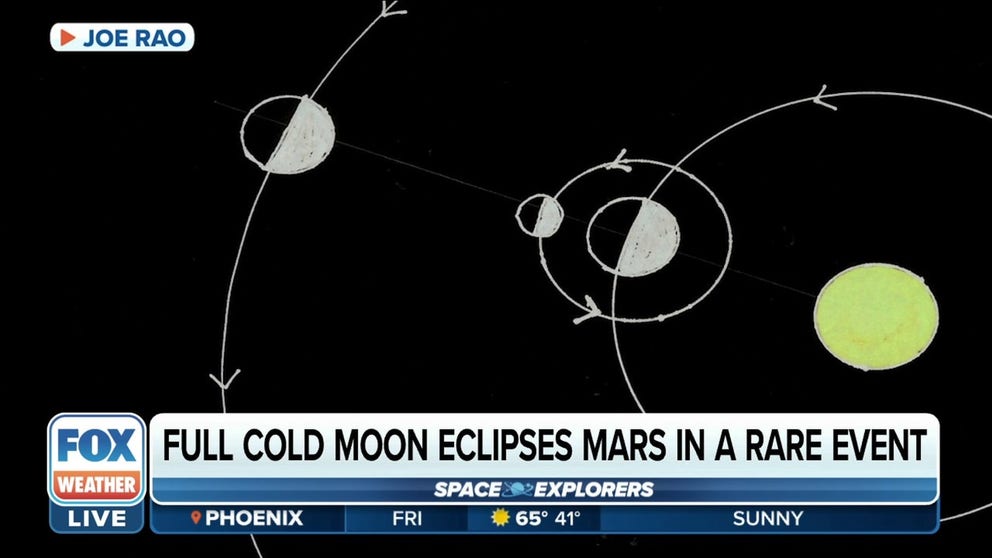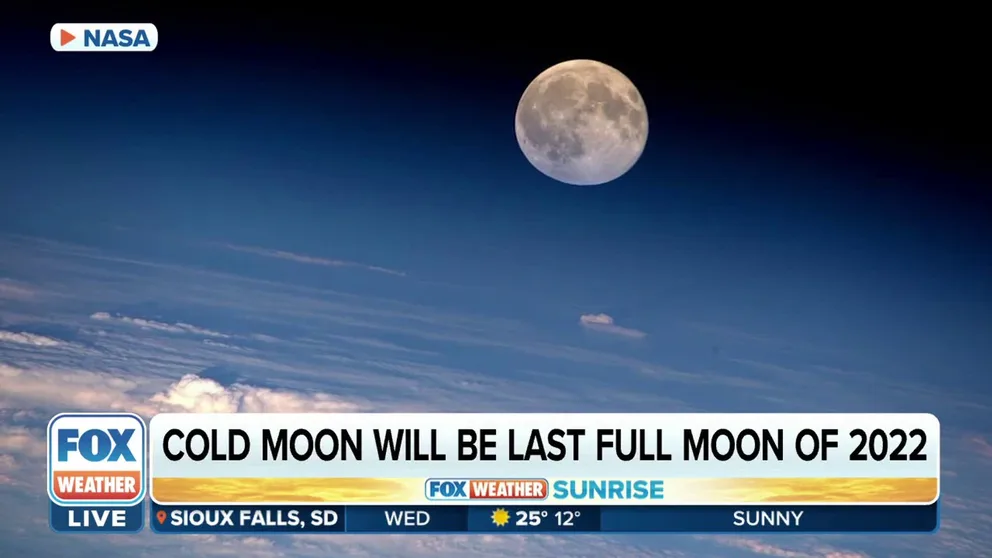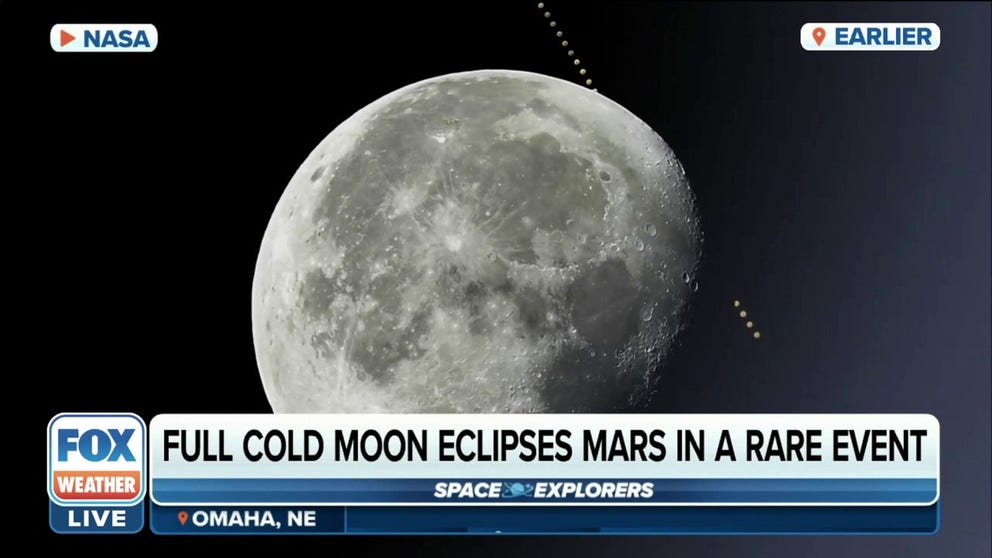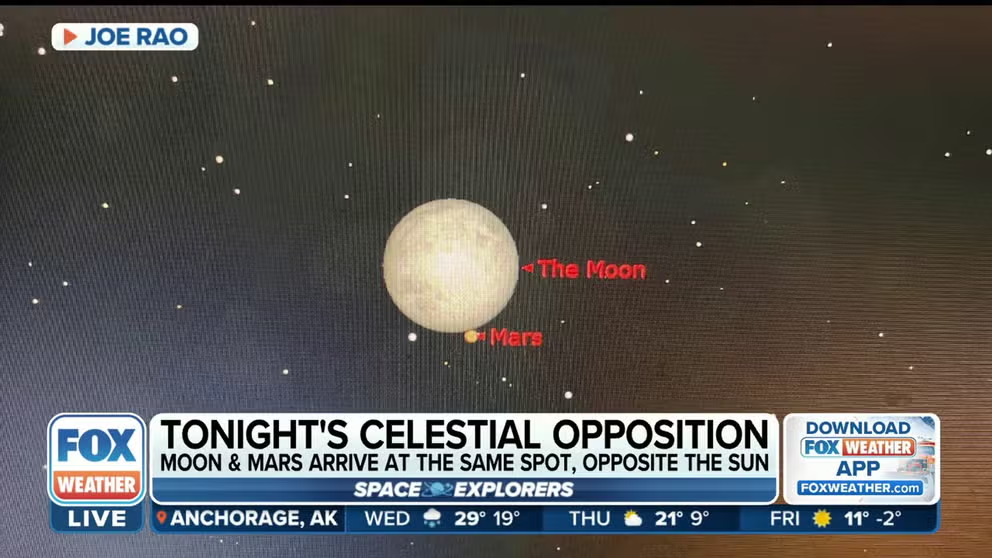Full moon eclipses Mars tonight in rare lunar occultation visible to most of US
The show for most of the US will begin a little after sunset Wednesday as the full cold moon starts to pass in front of Mars. Unfortunately, the Southeast and most of the East Coast will miss out on the event known as lunar occultation.
How to see Mars disappear behind the moon in tonight's rare lunar occultation
In a rare event known as an occultation, much of the world will also be able to watch the full moon pass in front of Mars and block it from the sky.
Mars and the moon will put on a December celestial show this week that can be viewed by almost everyone in the U.S.
Wednesday night is the last full moon of the year, known as the cold moon or the "long night moon."
'Striking sight' to see Mars slide underneath moon, astronomer says
Astronomer at Hayden Planetarium Joe Rao weighs in on the full moon eclipsing Mars Wednesday evening.
The moon will be at its fullest just after 11 p.m. EST, and you'll have a little bit more time to gaze at it since daylight saving time ended last month.
NASA astronomer Michelle Thaller explains Wednesday's event is a double treat for sky gazers because the full moon happens when Mars is in opposition in line with the Earth and Sun.
Full cold moon will illuminate the night sky on Wednesday
Dr. Michelle Thaller, NASA Astronomer and Scientist, talks about December's full moon, known as the "cold moon," which happens on Dec. 7. The moon will be at its fullest just after 11 p.m. ET.
"Not only do we have this full cold moon, but it's going to be passing right in front of Mars, so that's a wonderful thing that's called an occultation that will be happening at about 10 p.m. Eastern Time," Thaller said.
DECEMBER ASTRONOMY EVENTS: BEST METEOR SHOWER OF 2022, BRIGHT MARS AND FULL COLD MOON
According to NASA, the moon passes in front of planets several times a year, but it's usually only visible to a small part of Earth. Such a large swath of the world is rarely able to see the lunar occultation at once. For this event, most of North America, Europe and North Africa will be in the viewing area.
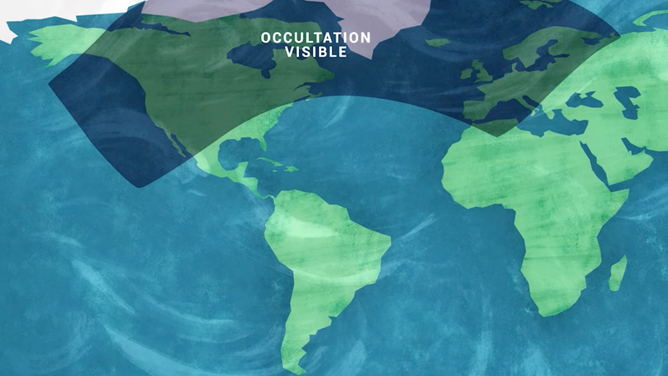
NASA lunar occultation viewing map.
(NASA)
The show for North America will begin a little after sunset as the moon starts to move in front of Mars. The red planet will disappear behind the moon between 6:30 and 9 p.m. EST depending on where you are looking up.
Unfortunately, the Southeast and most of the East Coast will miss out as Mars dips behind the moon. According to NASA, viewers on the East Coast will see the moon graze past Mars but not pass in front.
For those who do get to see lunar occultation, the key is a clear sky. Some areas in the West will have primarily clear viewing conditions Wednesday night, including Phoenix and San Francisco.
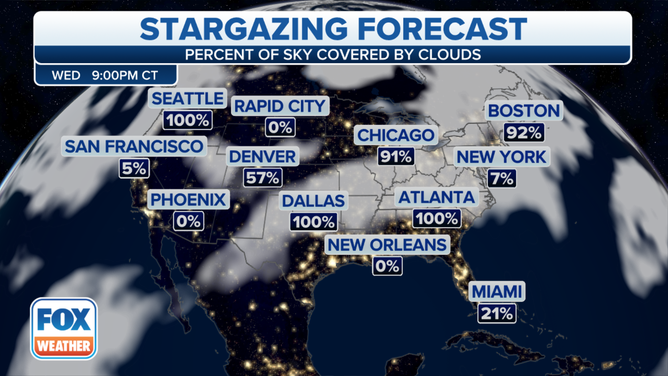
The U.S. cloud cover forecast for Wednesday night.
(FOX Weather)
In Minneapolis, Mars disappears behind the moon at 9:03 p.m. CST and pops back out at 10:11 p.m. CST. Los Angeles has the earliest view, with lunar occultation happening at 6:31 p.m. PST.
Lunar occultation of Mars reminder of how dynamic our solar system is: NASA scientist
NASA Lunar Scientist Noah Petro tells FOX Weather many in the U.S. will have the opportunity to catch the full moon eclipse Mars.
"With the winter sky, we often get very clear conditions, and the moonlight comes on through," Thaller said.
Most of US will have rare view of moon passing in front of Mars
Joe Rao, Astronomer at Hayden Planetarium, previews Wednesday night’s lunar occultation when the moon passes in front of Mars.
On Thursday, Mars will be in opposition to Earth. During opposition, Mars and the sun are on opposite sides of Earth, putting the two planets the closest together in their orbits.
7 TIPS ON HOW TO PHOTOGRAPH THE MOON
However, close is all relative when talking about the vastness of space. Mars will still be 38.6 million miles away at its closest approach.
This will be the best view of the red planet in two years since Mars opposition last occurred in October 2020.
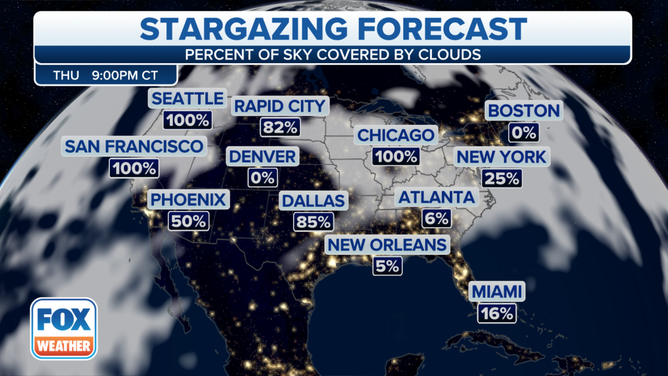
The U.S. cloud cover forecast for Thursday, Dec. 8, 2022.
(FOX Weather)
The FOX Forecast Center is tracking a mostly cloudless sky above Boston and Denver Thursday night to view Mars at its closest.
Keep in mind, the December astronomical show doesn't end this week. There are other celestial events, including the ongoing Geminid meteor shower, to enjoy through the end of the year.
